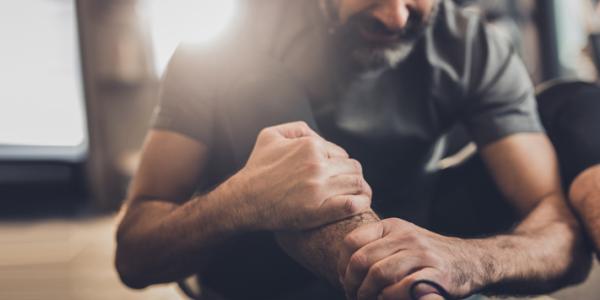
Foot and leg cramps are common and unpleasant. But can they also be dangerous?
Most of us have experienced the intense (although normally brief) pain from a foot or leg cramp. Often referred to as “charley horses,” these sudden cramps are caused by involuntary muscle contractions that can last from a few seconds to several minutes or more. Most cramps occur in the lower leg (typically the calf), and you can often feel a hard knot or lump in addition to the pain. They also tend to occur more frequently at night, and can leave you with muscle soreness or stiffness the next morning. Note that restless legs syndrome (RLS), which also occurs at night, is a different condition that, while uncomfortable, does not produce the severe pain of a cramping muscle. RLS symptoms are relieved with movement, while a cramping muscle needs to be actively stretched out before the pain subsides.
Anybody can get leg cramps, but they tend to strike more as we get older. Pregnant women are also more susceptible, with nearly half of them experiencing one or more episodes during their pregnancy. There is no known cause of leg cramps, but they seem to be linked to sitting for long periods of time, and standing or walking for long periods — especially on concrete floors. Over-exertion, working out in hot temperatures, muscle fatigue, dehydration and not getting enough magnesium or potassium in your diet can all increase the risk of cramps. Leg cramps may also be a side effect of some medications, including statins and diuretics, as well as some blood pressure and osteoporosis drugs.
Fortunately, leg cramps are generally not serious, and don’t usually require medical treatment. A few minutes of stretching the affected muscles will alleviate most cramps, and a warm compress applied to the area may also be helpful. But there are a few precautions most healthy people can take to help avoid occasional, painful leg cramps, including:
- Daily stretching, especially before and after any physical exercise. A few minutes spent doing leg stretches before bedtime may help prevent nocturnal leg cramps.
- Staying hydrated throughout the day, and especially in the few hours before bedtime.
- Keeping sheets and blankets loose around your feet and legs so your toes aren’t contorted while you sleep.
- Eating more foods that are rich in magnesium (especially leafy greens) and potassium (such as bananas and black beans).
If leg cramps occur regularly, last longer than several minutes, seem to be increasing in frequency or intensity or are accompanied by swelling or skin redness, it’s time to see a doctor. These could be symptoms of more serious, underlying health issues that need proper diagnosis and treatment.
This article first appeared in the October 2019 edition of the HealthPerks newsletter.

